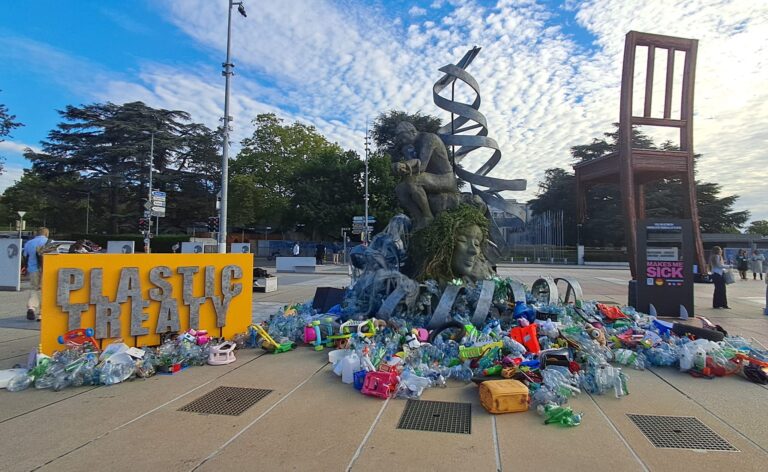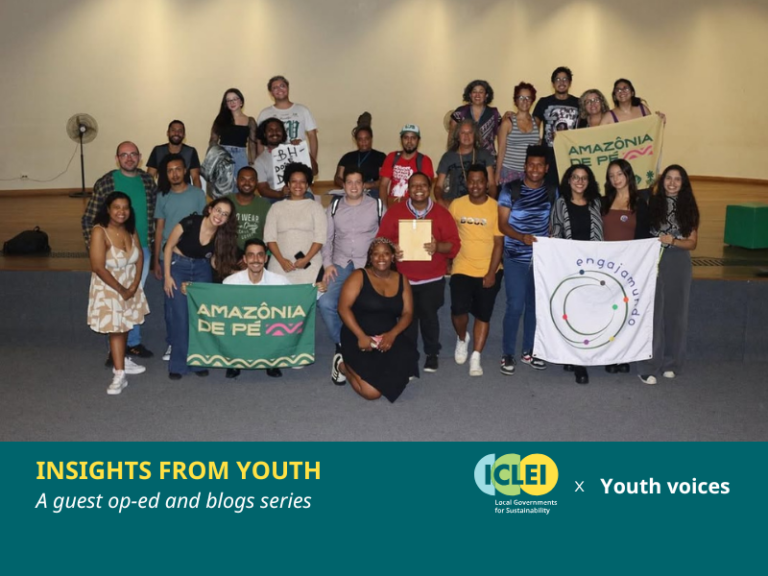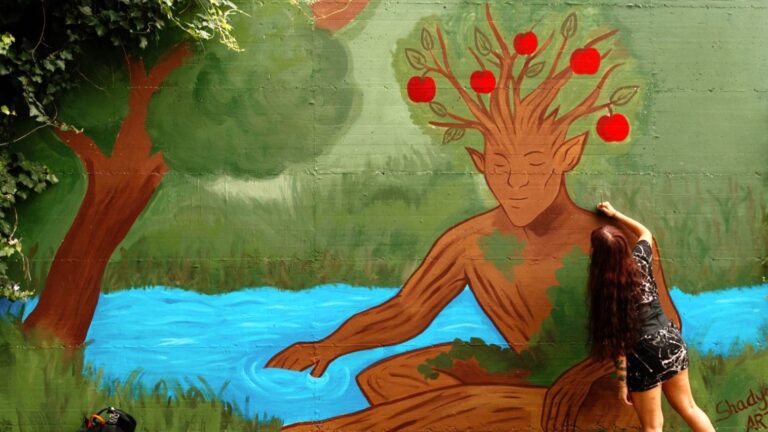Youth are taking climate stock. Here are ten ways cities can act with them.
* This guest op-ed article was written by John Warren Tamor as part of a partnership between ICLEI and YOUNGO Cities Working Group
Young people are not just the inheritors of the climate crisis; they are key actors in solving it. Their creativity, urgency, and lived experience offer perspectives that can reshape climate governance for the better. But meaningful engagement must go beyond symbolic invitations or one-off consultations. To truly harness youth leadership, local and regional governments need to co-create processes where young people help set agendas, influence decisions, and hold institutions accountable.
What happens when a local climate gathering also involves youth?
The result is something few global climate policy mechanisms can replicate: Climate governance that is participatory, locally grounded, and perhaps most critically, led by the very generation whose future is at stake.
Since launching in early 2025, ICLEI’s Town Hall COP Initiative has emerged as a powerful model to make climate action truly inclusive and locally led, transformation-oriented, and nationally relevant. Meanwhile, Local Conferences of Youth (LCOYs), coordinated by YOUNGO, the official youth constituency to the UNFCCC, have grown from modest gatherings to a network of over 100 youth-led climate summits globally. Outcomes from LCOYs feed into the Global Youth Statement, which YOUNGO consolidates and submits to the UNFCCC at every COP.
Born out of the 2023 Local Stocktakes – local events that provided an official contribution to the Paris Agreement’s Global Stocktake in the lead-up to COP28 -, Town Hall COPs are redefining what multilevel climate action looks like. The Initiative invites local governments and communities to bring the global climate movement home by hosting a local climate summit. These gatherings serve to inform, debate, and align local action with national climate plans (NDCs).
As Town Hall COPs scale up in 2025, youth leadership is making a visible impact. Nearly one-third of current Town Hall COP applications are youth-led, with many also exploring synergies with LCOYs, in-country, youth-led events designed to build capacity and drive engagement.
Building on the momentum of the 2023 Local Stocktakes, youth took a leading role in a series of gatherings across Africa through strategic partnerships with YOUNGO. In the following year, Nairobi (Kenya), Kampala (Uganda), and Accra (Ghana) each hosted youth-led Local Stocktakes. Youth participants not only assessed climate progress using data and community consultations but also engaged directly with city officials to present their findings. Notably, the Nairobi local stocktake led to the publication of an academic paper “Strengthening Local Climate Governance: Insights From Nairobi’s Subnational Government Stocktake,” published in March 2025. The study positions the local stocktake as a scalable model for climate governance, demonstrating how grassroots participation can inform top-down policies.
In 2025, Campinas, Brazil, hosted a Town Hall COP during the ICLEI Southeast Regional Meeting, directly engaging young people through a public call for youth-led climate proposals. Dubbed Mutirão pelo Clima, the initiative invited schools, grassroots organizations, and independent youth to submit adaptation projects that could inform local policy. Together, these two initiatives are promising but complex new models of climate governance, operating at the intersection of local action and global frameworks.
As cities around the world consider embracing this model, what practical steps can local leaders and youth organizations take to co-create Youth + Local Stocktake initiatives that foster genuine youth participation and translate ideas into meaningful climate action? Here are ten essential strategies to guide the way:
- Establish a cross-sector organizing committee
Successful events begin with a clear partnership. Municipal governments should collaborate early with local youth groups, academic institutions, and civil society. In Accra and Kampala, youth-led stocktakes were made possible through such partnerships, aligning youth energy with institutional capacity
- Define shared objectives
Are you producing a Local Climate Report? A National Youth Statement? Feeding into the Global Youth Statement for COP? Clarity around shared goals ensure the process has both political and procedural weight. Bonus tip: Alignment with international frameworks can significantly strengthen local relevance.
- Begin with data and context
Before the event, gather key metrics: Local emissions inventories, adaptation project updates, community impact surveys. Youth groups should lead their own assessments, combining technical data with lived experience. For instance, Nairobi’s youth-led stocktake became the basis for an academic publication on multilevel climate governance.
- Make the process participatory
TownHall COPs should not be limited to technocrats and officials. Incorporate storytelling, public roundtables, and consultations with vulnerable communities. The Youth Stocktake emphasizes that climate accountability must reflect the realities of those most affected.
- Frame the event as a civic space
Borrowing from the model of ICLEI’s Town Hall COP, design the event as a space for open debate and policy dialogue, not just presentations. In Campinas, youth helped shape the official outcome statement of the Town Hall COP, influencing subnational commitments tied to COP30.
- Produce two outputs: Youth + Local
Co-author two reports:
- A Youth Stocktake that reviews youth inclusion in local and national processes, policy gaps, and new recommendations.
- A Town Hall COP Summary that documents municipal progress and incorporates youth-generated evidence.
Ideally, both are endorsed by city officials and youth representatives alike.
- Integrate with the LCOY ecosystem
Where possible, host the stocktake as part of or alongside a Local Conference of Youth (LCOY). These events feed directly into the Global Youth Statement compiled by YOUNGO and delivered at COP. With over 100 LCOYs held in 2023, the mechanism is growing in both legitimacy and reach.
- Engage government beyond tokenism
Youth inclusion must go beyond invitations. Establish a youth-government working group to track progress post-event. In Ghana, LCOY organizers formed the Youth Climate Council, which now holds a formal advisory role in national climate planning.
- Ensure follow-up and public dissemination
Promote the stocktake findings widely. Present them to city councils, media outlets, and civil society partners. Share results with city networks, such as ICLEI, YOUNGO, and the UNFCCC via the Local Governments and Municipal Authorities (LGMA) Constituency. Youth stocktake should not end at the event; they should live on as policy instruments.
- Institutionalize the process
Build a system, not just an event. In Kenya, annual LCOYs have evolved into national youth policy dialogues, feeding directly into NDC revision cycles. The most successful youth stocktake are those embedded into ongoing local climate governance
A new model for climate governance
The merging of Youth Stocktakes with Town Hall COPs is not simply an exercise in inclusion; it is an emerging model of democratic accountability in climate governance.
As global climate negotiations increasingly hinge on implementation, the local level will determine success. And as youth demand not just participation but co-ownership of the process, cities would do well to listen, collaborate, and evolve.
* About the author
John Warren is an urban innovation professional specializing in helping cities and regions advance smart and sustainable development. He currently serves as a Contact Point for the Working Group on Cities at YOUNGO, the Official Youth Constituency to the UNFCCC.
He holds an MSc in Transition, Innovation, and Sustainability Environments, and is now pursuing a Dual Doctorate in Public Policy and Management. His research explores the twin transition in the context of smart cities and innovative public policy frameworks.







